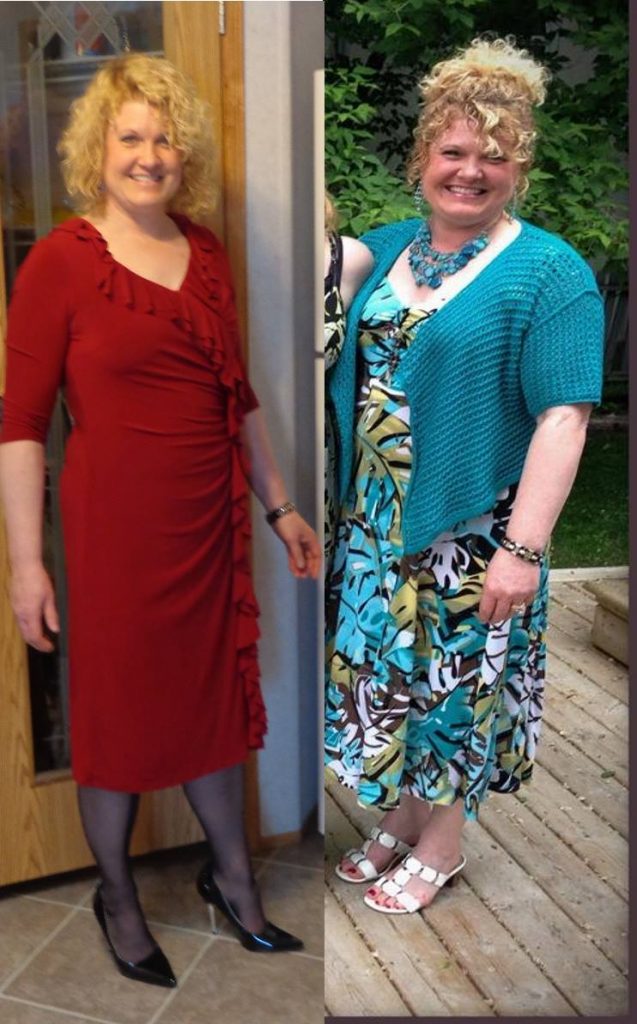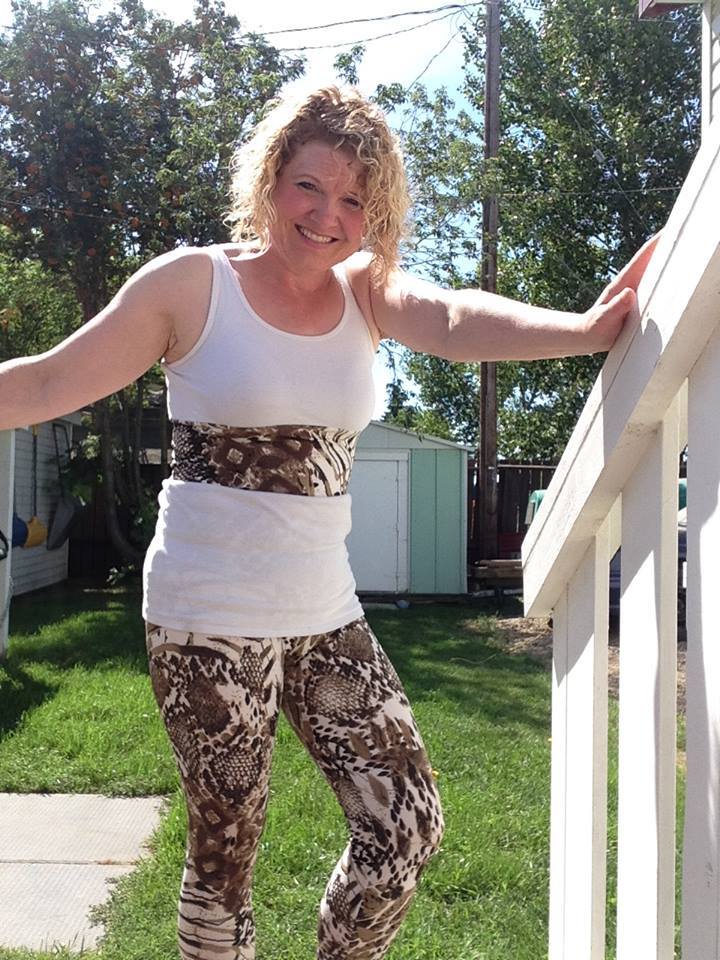OMAD stands for ONE MEAL A DAY. It’s a type of Intermittent Fasting where you don’t eat anything all day until supper. People have successfully lost weight with this method of eating. Those who do this type of Intermittent Fasting claim it’s not a diet, rather a way of eating.
I have been doing Intermittent Fasting since 2014 and tried several different kinds of fasting, but OMAD seems to suit me well. You can skip to my book HERE, or you can continue reading my story below. At the end of the article, I will post some resources for you.
I started out doing the 5:2 fast and successfully lost 50 lbs. It transformed my life and led me into the Intermittent Fasting lifestyle. I was able to maintain my weight loss long term and helped me discover OMAD.

There are many benefits to eating only one meal a day which we will discuss later. For now, I want to discuss how exactly I do OMAD. Let get started.
HOW TO DO OMAD? – When I get up in the morning, I don’t eat breakfast. They say that breakfast is the most important meal of the day, but that was probably made up by cereal companies that want to make money.
Breakfast is definitely not as important as people make it out to be. It’s a head game really. When I first started evaluating the importance of breakfast, I had to get past the idea that I was harming myself by not eating breakfast.
For most people, skipping breakfast is just fine. In fact, what that does is help your body maintain a fasted state from the night before. When you go to bed, you are actually fasting. You don’t eat anything when you sleep. So, that means you are fasting.
Breakfast actually means, breaking the fast, so you can actually do that any time of day. Some intermittent fasting programs like 16:8 are set up to break the fast at noon. That means for 16 hours you eat nothing. That includes the 8 hours you sleep.
I tried the 16:8 and really liked it. I still do it periodically, but do more OMAD these days because it suits my lifestyle better.
I like getting up, not having to think about eating breakfast, and just getting ready for work. I’ve done it so long, that I don’t even feel hungry. I like the fact that my focus isn’t on food all the time. I just go to work and start my day.
At lunch when my co-workers are preparing lunch, I can just focus on other things. I go out for a long walk on my lunch break, and it clears my head. I don’t feel hungry and I really don’t miss eating lunch.
Throughout the afternoon, I’m so busy working, that I don’t even notice that I haven’t eaten all day. I find it quite easy to get through my day without eating anything. If I need something to distract me from hunger, I simply drink water. If I want to change it up, I drink hot water like I’m sipping tea.
START SLOW – It’s important to note that you need to start intermittent fasting slowly. As I said earlier, I started my intermittent fasting journey by doing the 5:2 fast. It was first developed by Michael Mosley and gained popularity in the UK.

The 5:2 fast is when you pick two days a week where you fast, and the other 5 days, you eat like normal. You are allowed to have 500 calories a day if you are a woman, and 600 if you are a man. You can be creative with your food choices and there are many recipe books on the market, specifically for the 5:2 fast.
The reason I mention the 5:2 fast is because it helped me start slowly into intermittent fasting. If you jump into it too quickly your body will struggle. I’ve seen people go into fasting too hard and then crash because they didn’t have the stamina to maintain the lifestyle. And it is a lifestyle.
You wouldn’t suddenly run a marathon without training first. And you wouldn’t sprint all the way through a marathon. You would pace yourself so you don’t burn yourself out before finishing the race.
That’s what I’m talking about here. You need to pace yourself, train, and help your body get used to the fasting lifestyle. Then, once you’ve done it for a while, you can experiment with the different types of fasts. You can even start doing long fasts which will
AVOIDING FOOD – Avoiding food is the name of the game, but it isn’t the most important thing in the world. By that I mean, you can be flexible. That’s the beauty of intermittent fasting. You make the rules.
I have started a day of fasting, only to end up having an eating day instead. Sometimes life pulls a fast one on you and you need to adjust. Sometimes friends unexpectedly come in from out of town to visit. Maybe you haven’t seen them for years. They want to go out for lunch.
But you’re fasting.
What has worked for me is allowing flexibility. Life happens, and you shouldn’t fight it. Adjust. If you don’t, you will rebel. You will find your new way of eating is too regimented and you will feel deprived. THAT is what causes diets to fail. Don’t do that. Be flexible.
When I decide to do a fast day, and my grand-daughter unexpectedly visits and wants to go for ice-cream. I don’t say no. I embrace life and adjust my schedule for her. That allows me the
Avoiding food doesn’t have to be a challenge. You’ll find if you are flexible, you will WANT to avoid food at other times. Take for example, donuts. We often have donuts at the office. Someone brings them as a treat, except, I don’t always indulge. If I want to skip them, I do. If one day I don’t, then I don’t.
The key is to be flexible, but still diligent. It’s a balancing act. You will find the more you do intermittent fasting, the more you will want to avoid the food that tempts you.
HUNGER PAINS – I do have hunger pains, don’t get me wrong. I just don’t let them bother me. I tell myself, in the hunger there is healing. Not only do you lose weight, but your body will benefit. We’ll discuss that later. For now, let’s just talk about pain.
After you do intermittent fasting long enough, you’ll be able to go longer without dwelling on hunger pains. You won’t even care that your stomach growls. It’s weird, but if someone would have told me that years ago before I started intermittent fasting, I never would have believed them.
If you drink a lot of water, that can also make your stomach growl more. I like to cut down the amount of water I drink when doing a fast for that reason.
I also like to avoid places where there’s a lot of food smells. If I smell it, I will feel hungrier. Sometimes you can’t avoid smelling other people’s food, and it just reminds you of what you can’t have, but the way I get around it is to tell myself I can have it later.
Later.
That is the key to avoiding hunger pains. It’s just a mind game. If you can tell yourself you can have it later, it puts your mind to rest and you move through the pain.
It’s something you have to work up to. After you do intermittent fasting for a while, you’ll know what I mean. The hunger pain is actually a good thing and you develop that attitude after a while.
WATER FAST – A water fast is what they call it when you only drink water during the fasting window. This is what I do. I don’t like to eat salads and drink coffee or tea during a fast like some people do. I personally think that’s not really fasting then, though many would disagree. For me, I just like to keep it simple. I only drink water on a fast day. That simplifies my life and I don’t need to keep track of calories or try and figure out what I can and cannot eat.
WHAT TO EAT – What I eat on a fast day, as I said above, is nothing. I only drink water. But on an eating day, I eat whatever I want. I have a philosophy different from other people that fast. I believe if I restrict something, I will eventually go back to it. A way of eating, whatever it is, must be sustainable in the long run. If it’s not, then it won’t work. Maybe it will for a few years, but what about 10, or 20 years down the road? That’s not realistic. So many go on the Keto diet, eliminating carbs, and though it may work short term, or even 5 years or longer, it probably won’t for 20 or 30 years. If you don’t allow yourself ice cream, or mashed potatoes, or whatever it is you think you need to cut out, you will eventually rebel. And when you do, you will gain all the weight back. So, eat
MAINTAINING RHYTHM – There is a certain rhythm to intermittent fasting, and that’s up to you to find. Everyone is different. Everybody is different. It doesn’t matter what type of fast you do, just be consistent with it. Though I have done many types of fasting, I always like to develop a rhythm with whatever approach I take. With OMAD, I stick to it most of the week, and eat normally on weekends, or just on Sunday. I like to switch it up sometimes and throw in a 48 hour fast or a 4-5 day water fast. I think switching it up and changing things around is just as important as maintaining a rhythm. For me that versatility IS my rhythm.
WHAT IS YOUR END GAME? – It’s important to know what your end game is. By that I mean, what do you want to get out of intermittent fasting. Is only to lose weight? For some, that’s it, and that’s okay, but for me it is different. Yes, initially I wanted to lose weight. I achieved that weight loss, and then I settled into maintenance. After that, I focussed on the many benefits of intermittent fasting, and there are many.

BENEFITS OF OMAD – There are so many benefits to intermittent fasting, from weight
LONG TERM RESULTS – When considering doing Intermittent Fasting programs like OMAD, you have to consider what you want your long term results to be. Are you doing this to lose 50 pounds as I did? Are you setting a goal? Are you planning to flip onto a maintenance program after you achieve your weight loss goal? What might that be? I started on the 5:2 fast and lost 50 pounds. I then switched to 16:8, then experimented with long fasts. Then graduated to 20:4 fasts, and now to OMAD. I find that OMAD is a good maintenance regime and I have been able to maintain my weight loss since 2014. Consider also, the results you are looking for if you want to fix a part of your body that is damaged. For example, I had bad eczema on my hands that is now completely gone. I have eliminated inflammation in my body and calmed my stress down also. I’ve seen many benefits with intermittent fasting programs. I know I will continue doing it for the rest of
SPREADING THE WORD – It’s hard to spread the word about intermittent fasting because people are so negative toward it. I come across many who have put it down without even looking into it. Immediately they poo-poo it because they think you are harming your body. If they would only just try it and see how they feel before they judge it, they would change their attitude about it. It really is a marvelous tool to better your health in every way. Tell as many people as will listen. That’s what I do!
RESOURCES – For further info on
HUNGRY OLD LADY – INTERMITTENT FASTING FOR MENOPAUSE
CRUNCHY MENOPAUSE YOUTUBE CHANNEL
LOSE WEIGHT DURING MENOPAUSE BY INTERMITTENT FASTING
References
- Science Daily
- The North American Menopause Society
- Harvard Health
- Endocrine Web
- NCBI (Pub Med)
- Alternative Medicine for Menopause (LCBI)
- Healthline
- WebMD
- Women’s Health Concerns
- Reader’s Digest
- Mayo Clinic
_____________________________________________________

Author Kathleen Morris
Kathleen Morris is a successful published author, blogger, and Youtuber. She enjoys writing about things she’s passionate about and making a difference in the world.

